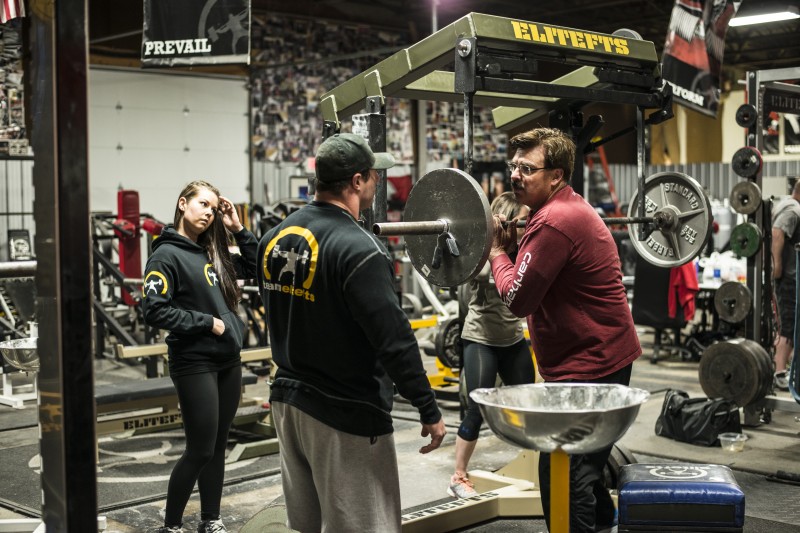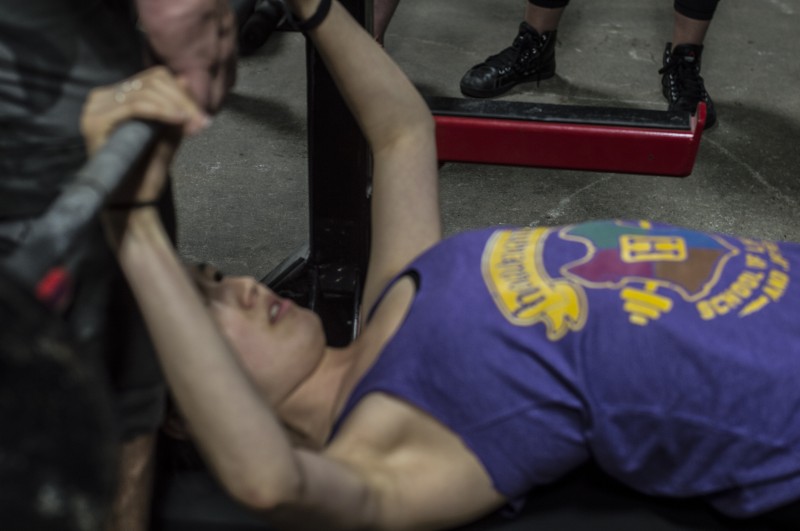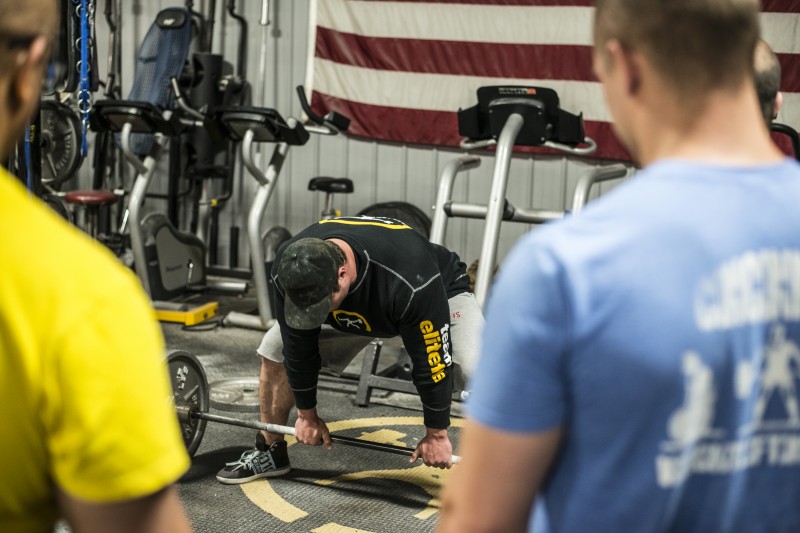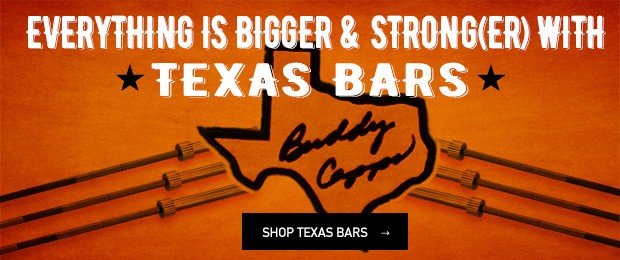
DISCLAIMER, or a necessary explanation about all the scientific citations between brackets: If they bother you, skip them. However, this specific article and the Motivation series has required the review of so many models, theories and controversial research evidence that technical honesty requires that I cite what allows me to make a certain claim. Do not expect the article cited to contain anything about the powerlifting example I gave; it just contains a reference to a model or evidence. This is how we bridge the gap between science and practice: there is science in one side of the gap, we are talking about the practice on the other side.
Hope is a risk that must be run.
—Georges Bernanos
Hesiod (ca. 8th–7th centuries BC, in Hesiod 1914)) wrote about Pandora, the first woman:
Only Hope was left within her unbreakable house,
she remained under the lip of the jar, and did not
fly away. Before [she could], Pandora replaced the
lid of the jar. This was the will of aegis-bearing
Zeus the Cloudgatherer.
Hesiod doesn’t explain why Hope remained in the jar (not box), nor why a jar full of evil should contain hope, of all things. Other ancient historians, such as Theognis of Megara, offer an alternative explanation according to which the jar contained blessings (not evil) and that all were gone except hope, which remained as a compassionate act of the gods in face of such foolishness (Gerber 1999).
Why start this article at antiquity? Because like love, hope is one of those things buried deep in our history and unconscious. And from there, dear lifter, it moves or stops us.
RELATED: Why Do You Lift — Meaning, Identity, Hope and Passion
From Hesiod and Theognis, we move to Richard Ficca. Richard is an elite powerlifter, successful businessman, owns a gym and coaches athletes. He is a referee, sports leader, organizer and has a happy family. But he is not a psychologist or behavioral scientist. His observation gains special interest because of that: it is purely inductive. The first time he shared it with me was when we were both judging a sanctioned meet and he whispered to me: “this is not going well. He is shaking his head at the bar." I said, “what?”, and the lifter missed the attempt. Between this and the next lifter, Richard quickly shared with me that he observed unsuccessful lifters shook their heads at some point from the chalk bowl to the bar. We had no time to discuss this, of course, so now I asked him if he would contribute an elaborated version of his observation for this article. Here it goes:
“Throughout my time lifting I have been amazed at how often you can see a lifter visibly shake their head in a 'no' fashion anywhere from the chalk bowl to their pre-lift setup and even during the lift. I am in no way saying that every missed attempt comes with a negative head movement, but I cannot think of a time I have seen this happen throughout the process and the lifter be successful. I have even seen it where all the other non-verbal cues seem to be aggressive and pro-lift (i.e. they are yelling, banging the bar, etc.) but when I see the head shake it inevitably ends in a failed attempt. I assume this is knowing they do not have it in them (believe they do not have it in them) to get the lift and this is an outward expression of that feeling. So what I wonder is it actually lending to the miss? I would assume so. I strongly believe that positive visualization can help us get that big attempt, therefore it would infer that negative would inhibit it so working with lifters to stop this subconscious sabotage would improve their lifting.” (Richard Ficca 2016)
What we will explore in this article is how hope underlies successful or unsuccessful lifts, through successful or unsuccessful preparations or even careers, injuries, burnout and, finally the decision to live or let go.
What is Hope?
Hope is not optimism. It goes beyond the belief that things will be okay. In very general terms, we can define hope as the belief that something desired will happen (Snyder et al. 2002, Bikos and Shepherd 2007). Simply put, hope reflects the belief that it is possible to find pathways to desired goals and become motivated to use those pathways (Snyder et al 2002).
Up to now, we have two important things for us about hope:
- A way to get there (a pathway)
- Believing you are able to follow that pathway (agency)
Charles Snyder defined hope also as “the sum of the mental willpower and waypower that you have for your goals.” According to Snyder, “willpower is the mental energy, the emotional drive put toward a goal and waypower represents the conceptualization of mental plans toward the goal.” What is important here is that hope is not some passive daydreaming, but a proactive attitude towards one’s goal (Phillips 2012). For us, athletes, this is what really matters in hope: you don’t just look at the bar wishing it happens. You work for it because you have hope. Concepts to take home:
- Willpower
- Waypower
That is where we find the relationship between hope and two other concepts that are directly important to sports performance and powerlifting in particular: motivation and risk. Hope is a positive motivational state based on the understanding that you have a plan and you can get there[1]. It is the individual’s perceived power to pursue their goals (Syder et al 1991 and Gustafssson et al 2010).
- Hope drives motivation producing a perceived power to pursue a goal.
However, we all know that plan A is not enough; you need to have plan B, C and sometimes D. What researchers call “pathway thinking” (waypower) is the ability to generate these plans, or usable routes to a desired goal. It is almost intuitive to conclude that a hopeful person who can generate plan B or C is much better tooled to handle adversity.
What is a Goal?
So now we come to another basic concept in life and in sports: goals. The three attempts on your weigh in card are goals. The degree you expect to get when you enroll in an educational program is a goal. The world record you are working your way to break is a goal.
The goal is, therefore, the final result of a set of actions according to plan. It is the achieved objective of a program.
There is a large degree of anticipation or expectation in goal setting (and you are probably already seeing the relationship of goals with hope, risk and motivation because of that). The acronym SMART defines the approach adopted by several researchers on the subject (Grant 2012). Although the specific words vary, one accepted version is:
- Specific – Target a specific area for improvement.
- Measurable – Quantify or at least suggest an indicator of progress.
- Assignable – Specify who will do it.
- Realistic – State what results can realistically be achieved, given available resources.
- Time-related – Specify when the result(s) can be achieved.
Goal is the least problematic concept for athletes: by definition, athletes function within goals. Maybe the SMART acronym was or will be useful to you. That’s good. But what is important is that you understand the relationship between goal and hope. Again, what drives motivation is the perceived power to achieve a goal. Hold on to this until we reach the item about what happens when we have or lose hope.
Goals are the targets of mental planning that provide an anchor to hope. Unlike many of the concepts that we discussed here, goals occupy conscious thought.
Lesson to take home:
- You need to have your goals as precisely worded out as possible for the rest of the “mental machine” to work
But the hope that connects us to the goal contains a greater or minor amount of risk: there is always uncertainty, and there is an emotional and a rational approach to uncertainty that compete with each other.
Uncertainty means risk. The more hopeful, the more prone to assume (more or less calculated) risks. The less hopeful, the more risk averse is the athlete.
What is Risk?
Risk is related to probabilistic decisions. We can’t change the fact that there is a chance of failure, but it is our emotional relationship with the goal that will direct how we consider our options (Lopes 1987 and Lopes 2013). Now that we know what a goal is, we know that the goal that is hoped for is usually somewhere between impossible and a sure thing.
Let’s take a powerlifting weigh-in card for example. I’m a good 123-pound lifter. What if I wrote down as my first (raw, no wraps) squat attempt 240kg/529 pounds? No wraps. no suit, just a belt. Wouldn’t it be awesome to do something like that? I wish I could. But I don’t hope, much less plan for that. It would be ridiculous and somewhat close to insane. If I wrote 130kg/287 pounds, then it would be impossible to miss: this is something at the lower intensity range.
I haven’t begun my preparation cycle for the Worlds yet, but I am absolutely sure my goal is not 260kg/573 pounds raw, no wraps, for the squat. I am also sure that it is not 135kg/297 pounds. It is something between the impossible (573 pounds) and a sure thing (297 pounds).
Each attempt at a powerlifting meet is extremely valuable. Depending on what your strengths are, what your record goal is, the “crucial lift” can be anything. But let’s agree that it is the first deadlift that defines whether you are still in the game or not. Being disqualified on the deadlift, after hours of intense and draining physical, mental, psychological, spiritual and existential demand, is devastating. So the first deadlift is when you are least of a risk taker: let’s make sure all the other numbers are on the book and then we’ll play with the next two attempts.
Because risk is precisely the potential of losing (or gaining) something valuable. The higher your belief in the waypower and willpower to lift that bar from the ground, the higher your first deadlift attempt will be relative to the scale “sure-thing/impossible.” Risk is an intentional interaction with uncertainty. Yes, shit happens; you can pull a hamstring on a stupidly easy weight and be disqualified. It’s a risk. Or you may supercompensate unexpectedly and break an all time record that will remain on the books for three decades (Antunes & Gonzalez 2015, Hansson et al 2014).
What Can Happen if You Have or Lose Hope?
Given the topics we covered, it is clear that a more hopeful athlete will have a higher quality of life, higher chances of achieving goals, therefore, better mental health due to decreased frustration levels and overall better performance.
Many things, however, can contribute to the loss of hope, which receives names like hopelessness, despair, indifference… all of these describe a state in which there is little or no hope.
One of the first negative consequences studied about loss of hope in athletes was the burnout (Eklund & Cresswell 2007). As you read the word, you probably thought this is another name for overtraining. While burnout definitely qualifies as one of the underperformance syndromes, it is different from overtraining. The focus of overtraining research has been on the physiological aspects of the underperformance and its pathological consequences; the emphasis on burnout is on the emotional state which is cause and effect of its many negative physical manifestations such as injury, illness and dropouts. Burnout is seen as a state of emotional and physical exhaustion, sport devaluation and a reduced sense of accomplishment (Lonsdale et al 2009).
RECENT: Why Do You Lift — Defining Passion
A general loss of control over one’s life (the self-determination triad: competence, autonomy and relatedness) may certainly result in burnout. A mediating or even determinant factor points out to loss of hope: researchers have examined the relationship between hope and athlete burnout among 178 competitive athletes (63 females and 115 males) aged 15–20 years. Hope was significantly and negatively correlated with all three burnout subscales: emotional/physical exhaustion, a reduced sense of accomplishment, and sport devaluation. Researchers suggest this happens because they are prone to experience goal blockage, frustration, and negative affect (Gustafsson et al 2010). There is also a general loss of “agency”. Agency means the perceived power to act (to be an “agent” in their own process).
Research revealed other less obvious issues. One aspect of athlete behavior positively associated with high performance and wellbeing is mindfulness. In short, mindfulness is being here and now. We all know what it means: when you listen “in the hole”, or, worse, “on deck”, you’d better be 100% there and then, the only focus away from your movement being the voice of the speaker and the head judge. Apart from the extreme competition situation, a successful preparatory program is marked by mindfulness (for any sport). Analysis showed that loss of hope affects mindfulness and that this determines sport devaluation, a reduced sense of accomplishment and more (Gustafsson et al 2015).
There is a positive and negative feedback between the outcomes of a program and hope. The more successful the results in a context of mindfulness and goal clarity, the more hopeful the athlete will be. The more hopeful, the better the results and so on. The inverse is also true (Hall et al 2016).
Some lessons to take home are:
- Being in control of what you plan and do is critical to positive results: it’s your life, your choices, your initiative
- The more you are present in your moment, the best you will achieve your goals and the more hopeful you will be
- The more you believe in yourself, the highest the chances of success
But life happens. Sometimes it happens with such catastrophic consequences that the individual is left without resources to react for some time. As we will see, this “time” may be forever. However, we have abundant cases in which extremely catastrophic events happened and the individual managed to recover the tools to react. He managed to reacquire HOPE.
What if an accident or a shooting happens and the athlete ends up paralyzed from a certain point in the spine down (paraplegic)? Or deprived of a limb in combat? The degree in which individuals are capable of performing this move in life and taking possession of complex psychological tools is such that you have many individuals that were not competitive athletes and became highly successful ones after the catastrophic event where they lost a limb or became paralyzed, as organizations such as I AM ADAPTIVE or Some Assembly Required show.
As was mentioned before, one of the characteristics of hopeful behavior was the ability to generate alternative routes, also known as plan B, C and D. Apparently, some people are especially equipped in creatively generating such alternative routes.
In our sport, many of the great icons have undergone highly disabling injuries and frequently reacted almost immediately according to plan B. Check the video below from our highest icon, Ed Coan, who, in 2002, had a serious accident during the squat. His words: “Move me out of the way so someone else can lift.” With his permission, the following video shows the accident:
Obviously, with torn tissue, Ed didn’t have a detailed “plan B” in his mind at that exact moment of the accident. However, the reason he could calmly be altruistic and rational enough to understand the meet had to keep going is that his psychological structure had the tools to handle the failure of plan A (the main pathway) and not be disturbed by that to the point of damaging the structure of his goal commitment. That, we know, has been intact to this day.
Aging is another source of adversity. Some athletes deal with aging in a more or less positive way. In their study about aging endurance athletes, Ronkainen et al (2013) identified four major storylines to their research subjects:
- The end of an era
- Putting things in perspective
- The attitude has to change
- Winning was never the only motive
We have a gradient of hope attitudes there, the last one being the “transcendent” type that has the highest stability.
In some cases the injury or loss is an end, or a transition to a life without sport. Loberg (2009) studied career-ending-injuries in a qualitative study with thirteen male and female former athletes representing a number of different sports in her Ph.D. dissertation and came up with the following recurring themes in their interviews:
“Your life is never the same: now, before, and after.”
“Something is ripped from you: loss of identity, strength, and other people.”
“It still hurts: pain, anger, depression, and fear.”
“It wasn’t really my choice: denial and false hope.”
“Nobody else knows what you’re going through: difficult relationships, misunderstandings, and unconditional support.”
All these themes contain evidence of loss of hope, goals and positive affect. She concluded that the extent and pervasiveness of the pain and damaged caused by the catastrophic event go far beyond the injury itself.
I would like to finish this article with what I consider one of the most important lessons to take home. How do we hold on to hope?
“Holocaust Survivor, Elie Wiesel tells us, 'Just as despair can come to one another only from other human beings, hope, too, can be given to one only by other human beings.' In the face of emotional pain and traumatic loss, it is very often another person who stirs and helps us hold on to hope.” (Phillips 2012).
The last lesson I want you to take home is:
- We need one another. Whether it is to hand off the bar or to hold on to hope.
Sometimes people just fail to hold on to hope, whether because of the overwhelming impact of a catastrophe or not. The whole self-regulation and autonomy system collapses and hope is gone (Baumeister and Heatherton 1996). We will leave that for the next article on this series: “Suicide”. There, we will not just explore the decision to end one’s life, but how the issues we presented up to now are connected and how something as simple and complex as powerlifting can save someone from death. It will also be the first time I will be a protagonist in the story: I am an (accidental) suicide survivor. Powerlifting saved my life.
“To hope under the most extreme circumstances is an act of defiance that…permits a person to live his life on his own terms.”
― Jerome Groopman
References
- Antunes, Ricardo; Gonzalez, Vicente (3 March 2015). "A Production Model for Construction: A Theoretical Framework". Buildings 5 (1): 209–228.doi:10.3390/buildings5010209. Retrieved 17 March2015.
- Baumeister, Roy F., and Todd F. Heatherton. "Self-regulation failure: An overview." Psychological inquiry 7.1 (1996): 1-15.
- Bikos, Lynette, and Lauren Shepherd. "The Psychology of Hope." (2007).
- Eklund, R. C., & Cresswell, S. L. (2007). Athlete burnout. In G. Tenenbaum & R. C. Eklund (Eds.), Handbook of sport psychology (3rd edn., pp. 621–641). New York: Wiley.
- Gerber, Douglas E., ed. Greek Elegiac poetry: from the seventh to the fifth centuries BC. Vol. 1. Loeb Classical Library, 1999.
- Grant, Anthony M. "An integrated model of goal-focused coaching: An evidence-based framework for teaching and practice." International Coaching Psychology Review 7.2 (2012): 146-165.
- Gustafsson, H., Davis, P., Skoog, T., Kenttä, G., Haberl, P. (2015) Mindfulness and its Relationship with Perceived Stress, Affect and Burnout in Elite Junior Athletes. Journal of Clinical Sport Psychology, 9(3): 263-281
- Gustafsson, Henrik, Peter Hassmén, and Leslie Podlog. "Exploring the relationship between hope and burnout in competitive sport." Journal of Sports Sciences 28.14 (2010): 1495-1504.
- Hall, Nathan C., et al. "Achievement goals and emotions: The mediational roles of perceived progress, control, and value." British Journal of Educational Psychology (2016).
- Hansson, Sven Ove; Zalta, Edward N. (Spring 2014). "Risk". The Stanford Encyclopedia of Philosophy. Retrieved 9 May 2014
- Hesiod; Works and Days, in The Homeric Hymns and Homerica with an English Translation by Hugh G. Evelyn-White, Cambridge, MA.,Harvard University Press; London, William Heinemann Ltd. 1914. Online version at the Perseus Digital Library.
- Loberg, Lauren Aline. "In that instant it was over: The athlete's experience of a career-ending injury." Doctoral Dissertations (2009): 54.
- Lonsdale, Chris, Ken Hodge, and Elaine Rose. "Athlete burnout in elite sport: A self-determination perspective." Journal of sports sciences 27.8 (2009): 785-795.
- Lopes, Lola L. "Between hope and fear: The psychology of risk." Advances in experimental social psychology 20.3 (1987): 255-295.
- Lopes, Lola L. "Goals and the organization of choice under risk." Citado na pág (2013).
- Phillips, S. (2012). Does Hope Really Make a Difference? Scientific Findings. Psych Central. Retrieved on June 7, 2016, from http://blogs.psychcentral.com/healingtogether/2012/07/doeshopereallymakeadifferencescientificfindings/ Last updated: 1 Aug 2012
- Ronkainen, Noora J., Tatiana V. Ryba, and Mark S. Nesti. "‘The engine just started coughing!’—Limits of physical performance, aging and career continuity in elite endurance sports." Journal of aging studies 27.4 (2013): 387-397.
- Snyder, C. R., Kevin L. Rand, and David R. Sigmon. "Hope theory."Handbook of positive psychology (2002): 257-276.
- Snyder, C. R., Lori M. Irving, and John R. Anderson. "Hope and health."Handbook of social and clinical psychology: The health perspective 162 (1991): 285-305.
[1] “Thus, hope is “a positive motivational state that is based on an interactively derived sense of successful (1) agency (goal-directed energy) and (2) pathways (planning to meet goals)” (Snyder, Irving, & Anderson, 1991, p. 287).













1 Comment